Tissue Management
ViscoStat™ Clear
25% Aluminum Chloride 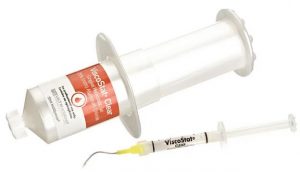
ViscoStat Clear hemostatic gel is recommended for anterior restorations because it quickly eliminates minor bleeding without leaving any residue. The patented tissue-kind silica formula quickly stops minor bleeding without forming coagulum or leaving hemostatic residue adhered to the preparation, resulting in stain-free teeth and soft tissues, a feature especially critical in the “esthetic zone.” Additionally, unlike ferric sulfate-based hemostatic solutions, ViscoStat Clear hemostatic does not interfere with bonding.
- Stops all minor intraoral bleeding, but designed specifically for the esthetic zone
- Transparent gel leaves no residue and rinses off with ease
- Convenient direct delivery eliminates waste
- Non-drip gel is viscous yet spreadable
- Does not interfere with bonding
Before and After ViscoStat Clear Hemostatic
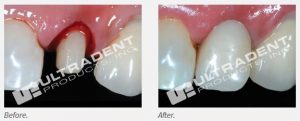
Clear, Viscous Consistency
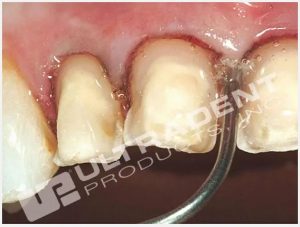
Ultrapak™
Knitted Cord
Ultrapak cord is made of 100% cotton, knitted into thousands of tiny loops to form long, interlocking chains. This unique knitted design exerts a gentle, continuous outward force following placement, as the knitted loops seek to open. Optimal tissue displacement occurs in 3–8 minutes. Ultrapak E knitted cord is impregnated with racemic epinephrine hydrochloride.
- The original—and smallest—knitted cord
- Provides rapid tissue displacement, detailed margins, and quality impressions
- Facilitates easy packing and stays placed better than any twisted or braided cord
- Compresses upon packing then expands for optimal retraction
- Does not entangle in diamond bur
- Bright colors facilitate easy location and removal
- High carbon steel blade ensures a clean cut
- Thin plastic gate prevents cord from falling into the bottle upon cutting
- Ruler printed on label provides easy cord measurement
*Note: Do not use Ultrapak E knitted cord or other epinephrine preparations with ferric sulfate solutions, including ViscoStat™, Astringedent™, and Astringedent™ X hemostatics, as a blue/black precipitate will occur. Ultrapak cord with Epinephrine is not available in all countries.
6 Sizes
Ultrapak knitted cord comes in cords as small as size #000 to as large as size #3, making Ultrapak cord suitable for any clinical situation. The smaller cords are ideal for pediatric cases where carious lesions have extended beyond the gumline and as the first cord in the double-cord technique. The larger cords work well as the upper cord in the double-cord technique and for areas that have thick gingival tissues that require a significant amount of force to be retracted.
Uses
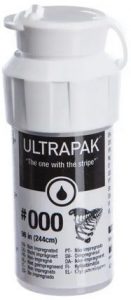
#000
- Use as lower cord in the double-cord technique
- Anterior teeth
- Double packing
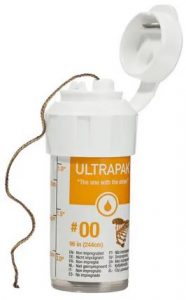 #00
#00
- Preparing and cementing veneers
- Restorative procedures dealing with thin, friable tissues
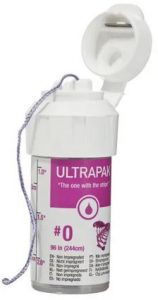
#0
- Lower anteriors
- When luting near gingival and subgingival veneers
- Class III, IV, and V restorations
- Second cord for double-cord technique
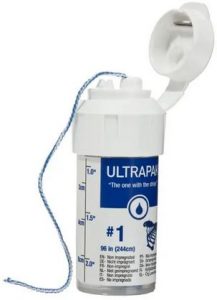
#1
- Non-impregnated #1 and #2 sizes are particularly effective for tissue control and/or displacement when soaked in coagulative hemostatic solution prior to and/or after crown preparations
- Use as a protective pre-preparation cord on anteriors
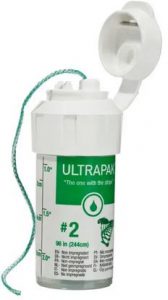
#2
- Upper cord for double-cord technique
- Use as a protective pre-preparation cord
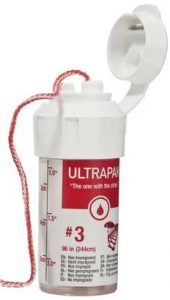
#3
- Areas that have fairly thick gingival tissues where a significant amount of force is required
- Upper cord for use with the double-cord technique
